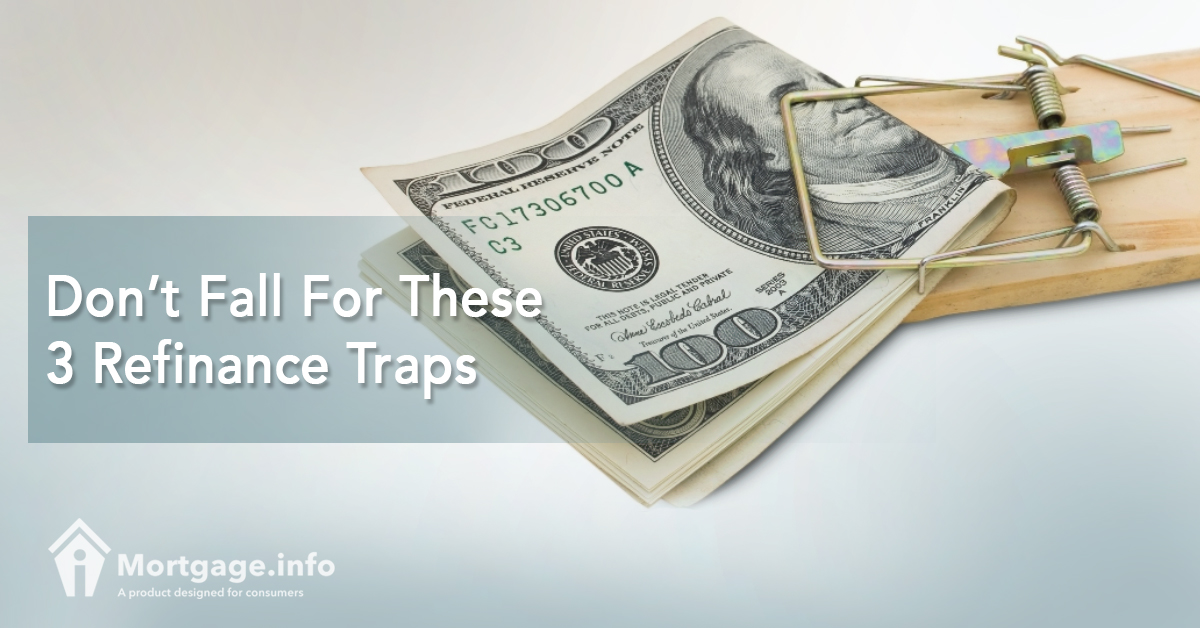The premise of refinancing is good. It empowers the homeowner to change some aspects of his/her mortgage for the best outcome possible. Nonetheless it matters to think things through beforehand and not succumb to the temptation of too-good-to-be-true rates and savings. Be realistic and don’t fall for these refinance traps, the most common ones are as follows.
The Myth of the Rate.
If you chance upon a rate on an advertisement online, on TV, or over the radio, look for a fine print or a disclaimer. Most likely this advertised rate only applies to the best conditions possible. That is if you have a stellar credit score, a spotless credit history, and more. The rate as advertised is likely to change as rates do within the day, week or so.
What you can do:
- Shop for the best rates. Ask quotes from lenders. Do note that the quoted rate is only good as when it was quoted.
- Lock in a rate that you think is most favorable to you.
Take note of introductory rates on adjustable-rate mortgages, too. They are true but only for a certain period and if you don’t know how ARM rates work after that, you may be in for a surprise.
Forget the Fees Not.
When you refinance, think of the rates and the fees. You’ll pay a new set of costs and fees when refinancing, including but not limited to these:
- Application fee. This what you pay to the lender for accepting your application.
- Credit report fee. This is what you pay to the lender for pulling up your credit file.
- Appraisal. This is what you pay to the third-party appraiser to determine your home’s current market value.
- Escrow. This is an account with a fee for maintenance, which holds your homeowner’s insurance and property taxes for two months.
- Survey fee. This is what you will pay to verify your property’s physical lines and boundaries.
- Recording fee. This is what you will pay to city or county recording office for the property’s records.
- Points. These are prepaid interests that you will pay to get a lower rate.
- Origination fee. This is what you pay to the lender for incurring administrative costs in originating your loan.
- Underwriting Fee. This is what you pay to the lender for considering your loan application.
- Closing fee. This is what you pay to the attorney, title company or escrow company overseeing the closing of the loan.
The list goes on and could include fees and costs inherent to each state and lender for example. What’s important is to go through the fee schedule and ask your lender about costs that you don’t understand or might not serve a purpose.
It is the costs of getting a loan that should alert you to do the math first and see how these (costs) stack up to the savings you plan to realize when refinancing. Because if the refi transaction proves more costly, it might make more sense to stick to your current mortgage.
Reaping Savings Overnight
You plan to save and make your mortgage better to manage. That’s why you look to refinance and get a lower rate and a lower payment.
Apparently, the promise of savings can only be delivered after a certain period of time has lapsed. This is called a break-even point.
It takes years to reach the level where you can say that what you’ve paid to take out the loan was worthy of the dollars you’ve saved in payments. Of course, you have to remain in the home to reap these savings.
Always maintain a “I’ll think about it” stance when shopping for mortgages. Don’t be too hasty but don’t drag your feet either if you come across a deal worthy of a refinance.

